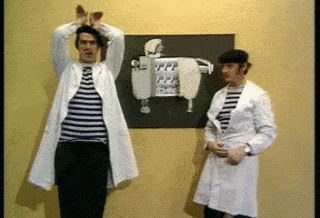Everything posted by Txzen
-
Michigan @ Oklahoma
It doesn’t matter who is in at qb with this o.
-
Michigan @ Oklahoma
All jumbo package, all the time.
-
Michigan @ Oklahoma
Christ this play calling…
-
Michigan @ Oklahoma
Ok, one more chance for a three and out.
-
Michigan @ Oklahoma
They run meatchicken’s O better
-
Michigan @ Oklahoma
Unfortunately this is just going to validate the way they play O.
-
Michigan @ Oklahoma
God OU are a bunch of insufferable punks.
- Michigan @ Oklahoma
-
2025 Random Games thread
L oh effing L
-
2025 Random Games thread
Well timed TO from Florida with :22 on the clock.
-
2025 Random Games thread
Waiting for USF to do something dumb. Hope they don’t.
-
2025 Random Games thread
Too soon.
-
2025 Random Games thread
Maybe burning 4.72 seconds of clock of their last possession was a mistake?
-
2025 Random Games thread
Oh my.
-
2025 Random Games thread
Florida is a seriously dumb team.
-
2025 Random Games thread
No idea what they are doing here. Hoping the D holds I guess…
-
Hire a fucking offensive play caller
But ESPN said he was the best player caller in the league.
- #1 Texas vs. #3 Ohio State - 11am on Fox
- #1 Texas vs. #3 Ohio State - 11am on Fox
- #1 Texas vs. #3 Ohio State - 11am on Fox
- #1 Texas vs. #3 Ohio State - 11am on Fox
- #1 Texas vs. #3 Ohio State - 11am on Fox
- #1 Texas vs. #3 Ohio State - 11am on Fox
- #1 Texas vs. #3 Ohio State - 11am on Fox
- #1 Texas vs. #3 Ohio State - 11am on Fox
Football ...
Basketball ...
Baseball ...
Other Sports ...
Futbol ...
🤫995🤫 ...
Gambling ...
Movies & TV ...
Music ...
Hobbies ...
Lulz ...
Food & Travel
...
Daily Texan ...
Business & Markets ...
Cloak Room ...
Help ...
For Sale ...
Board Discussion ...
Advertise...
Tailgate Donations
Back to top



